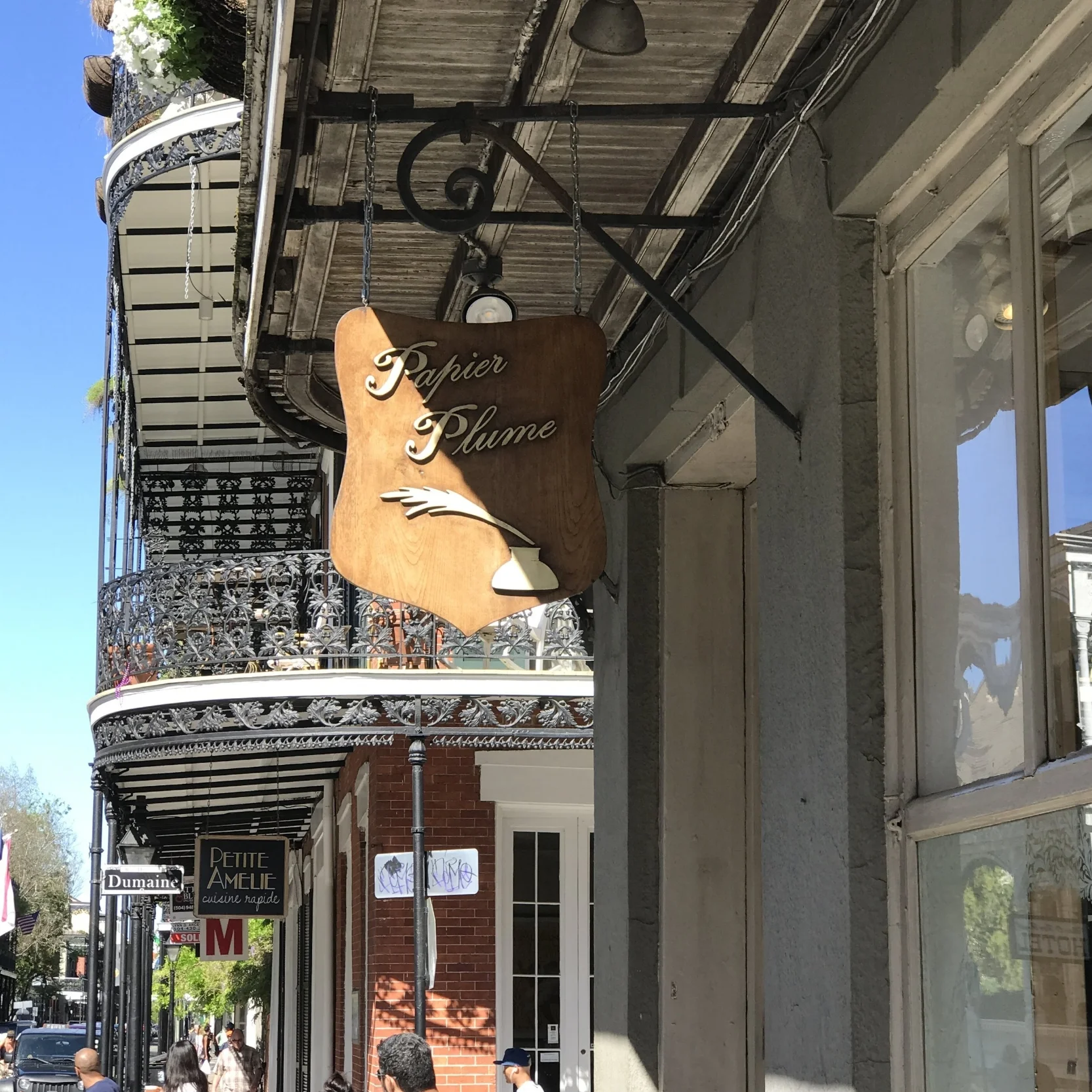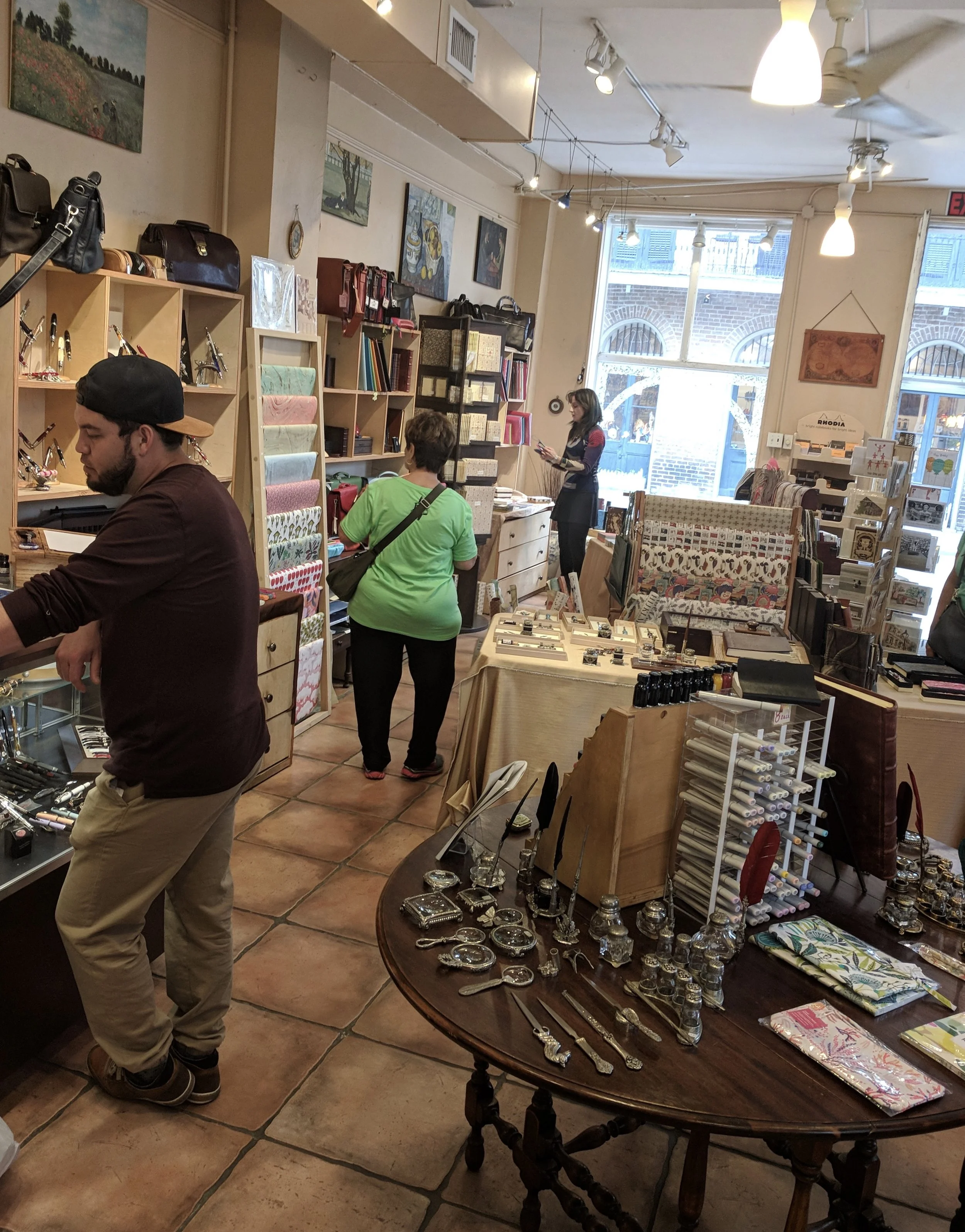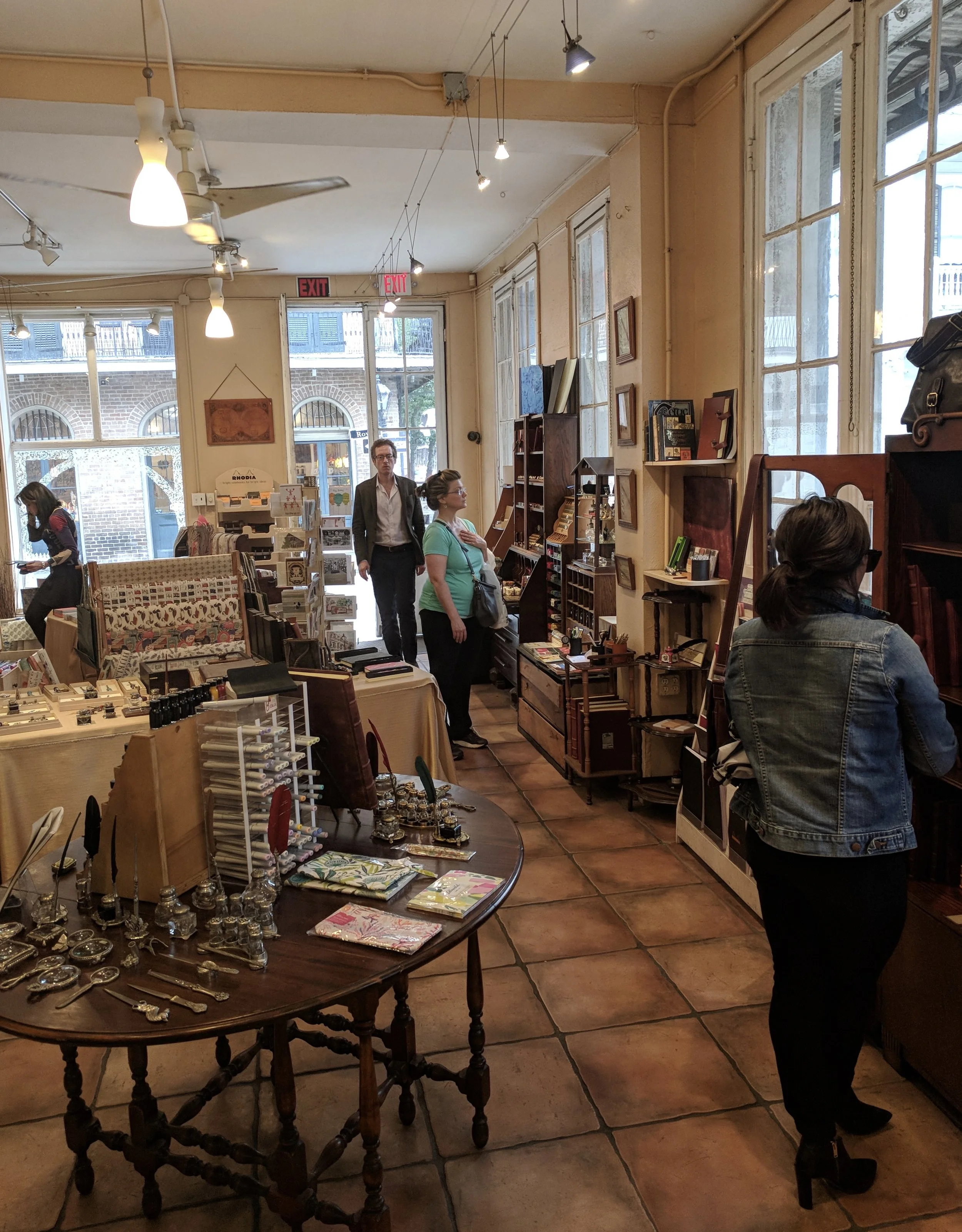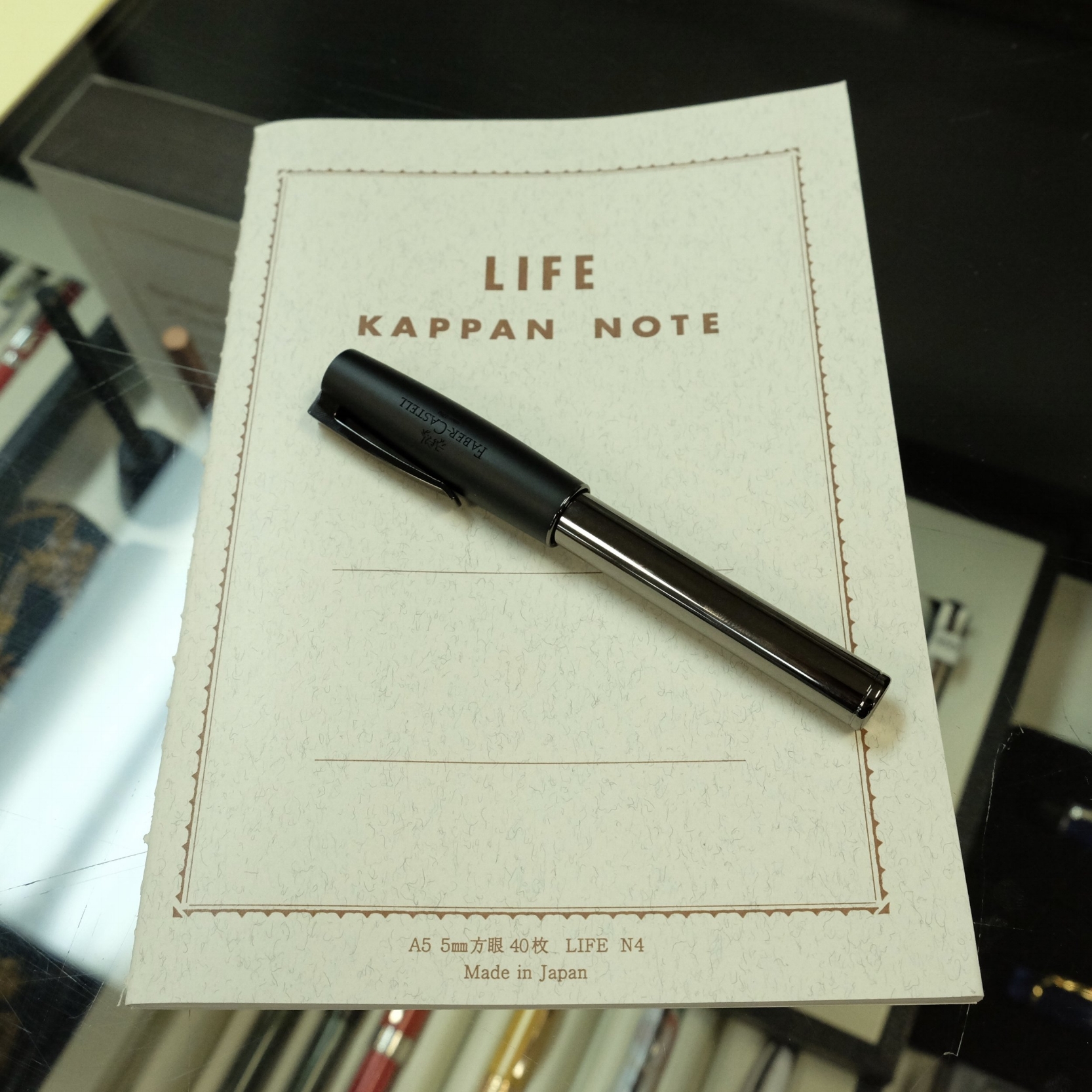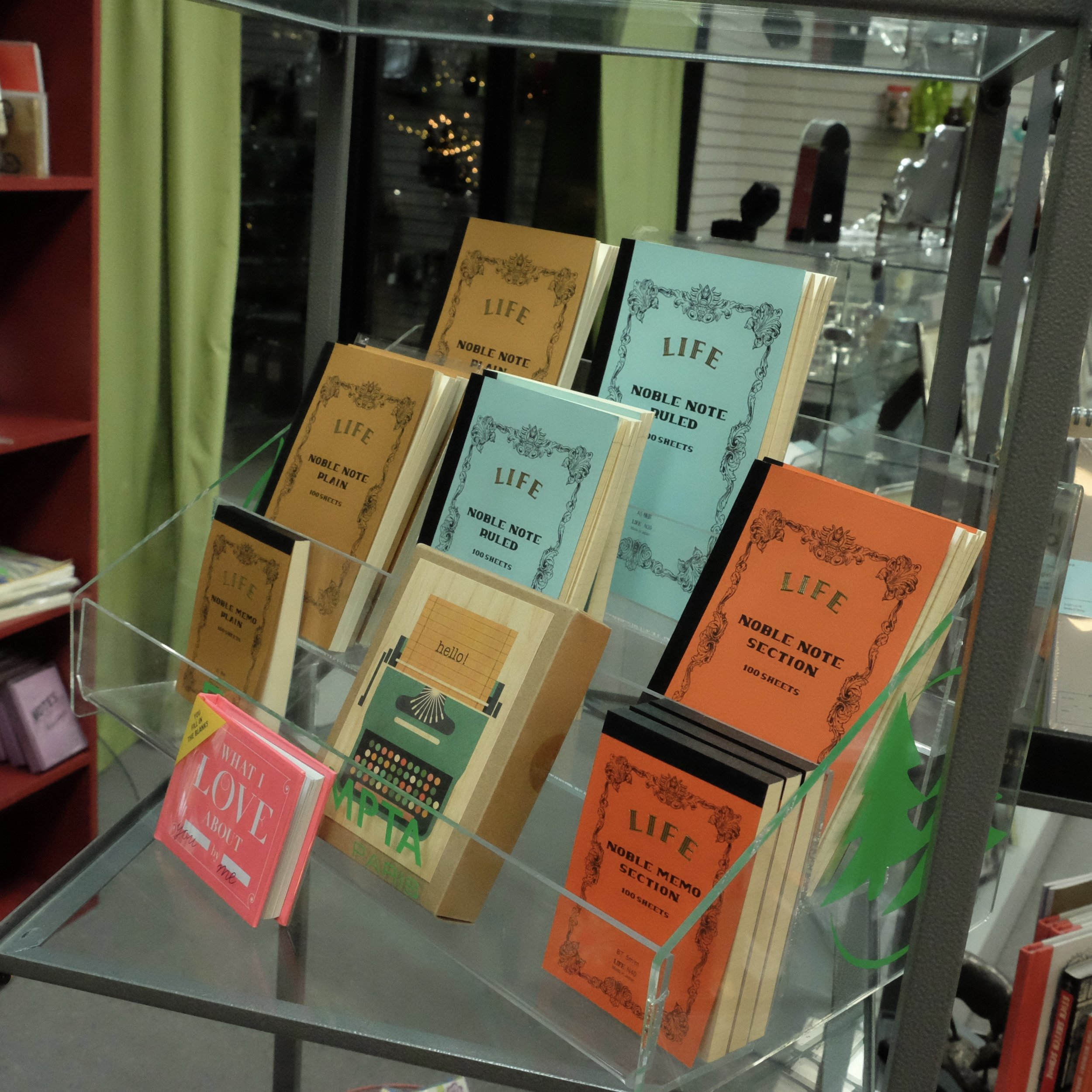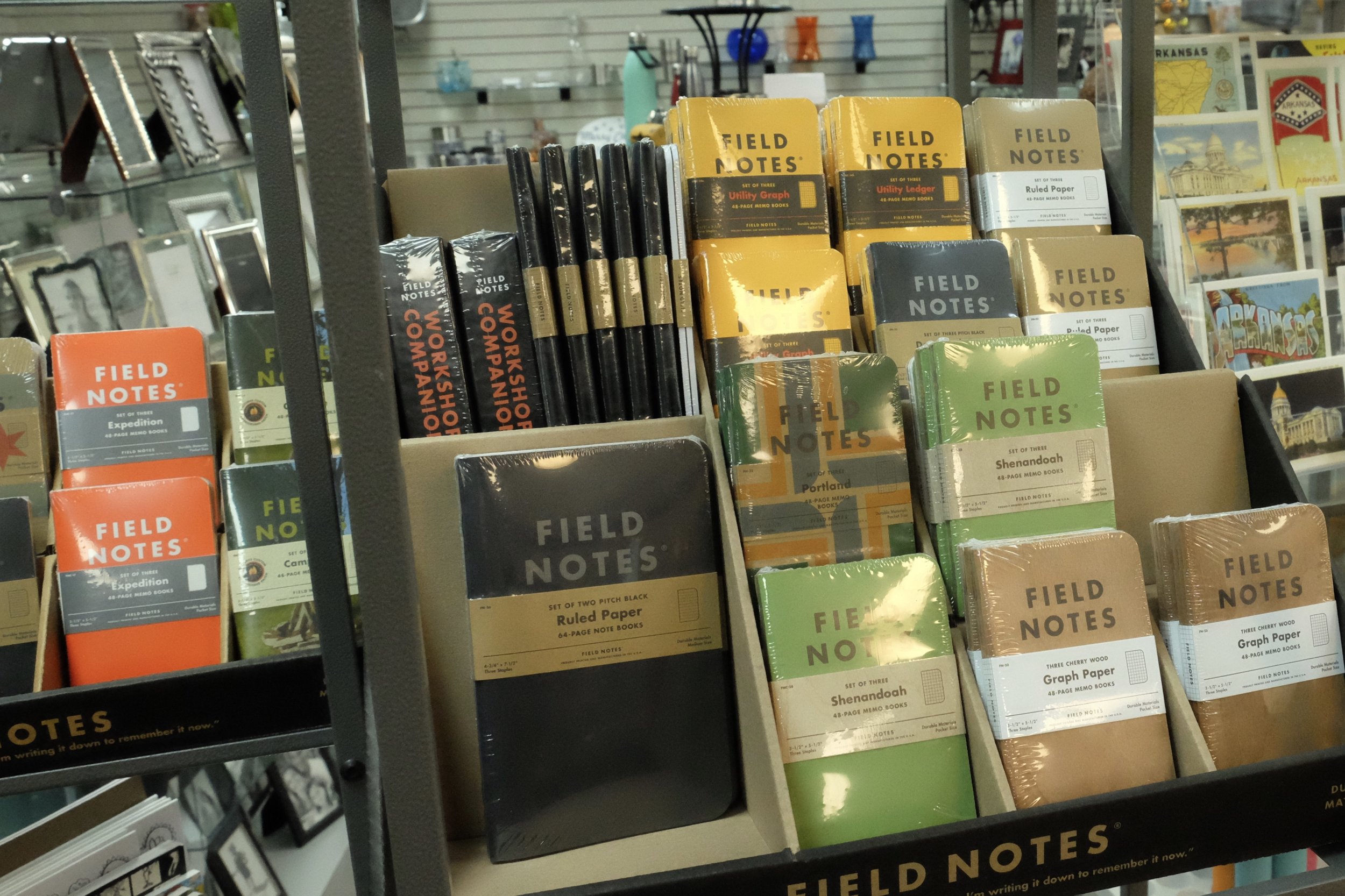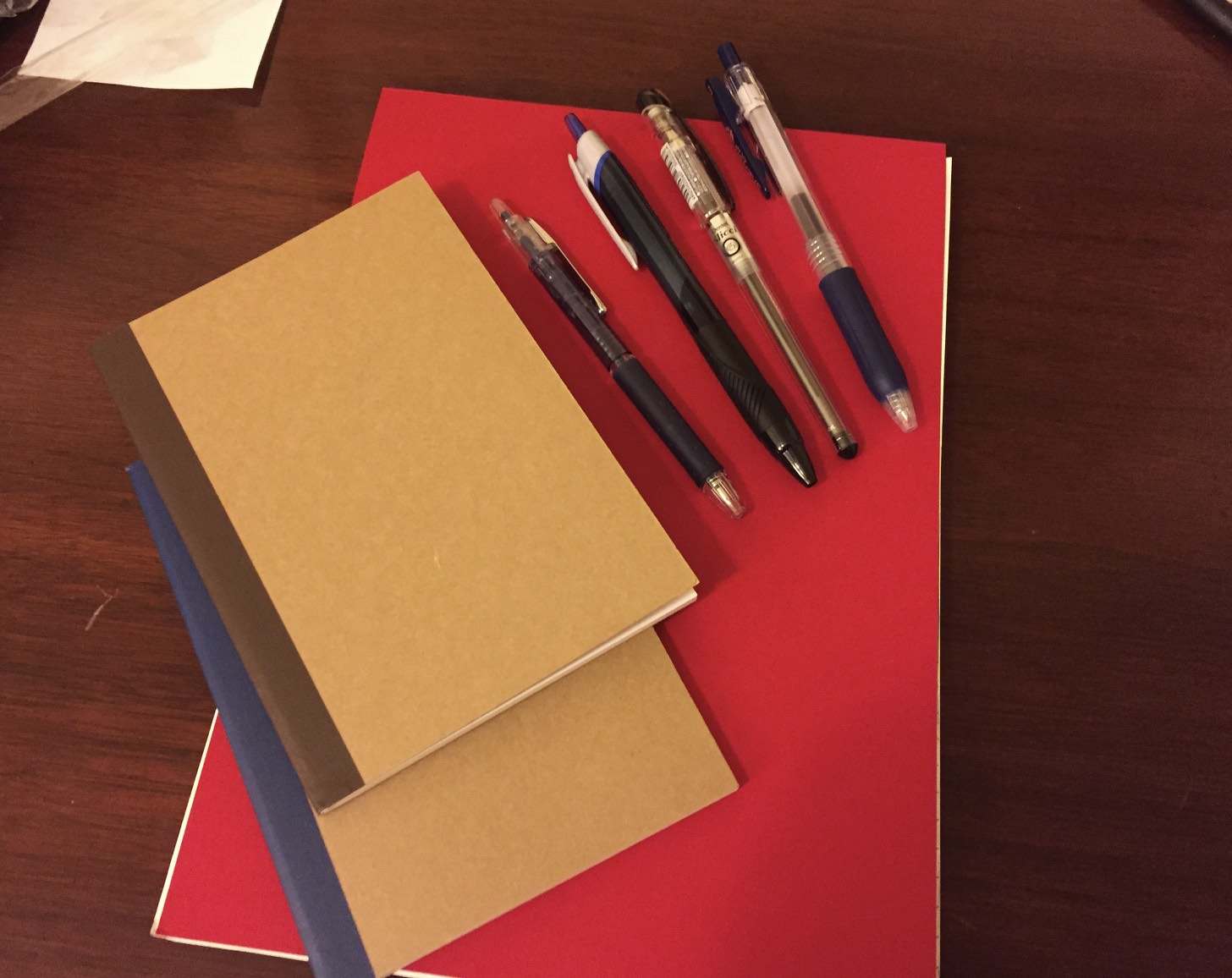While building out and stocking a brick-and-mortar store space is certainly exciting, and I’ve enjoyed the process every bit as much as I expected, designing an office involves an entirely different set of considerations and decisions. Informational content, instructional and educational resources, and online sales will always be a key focus of The Gentleman Stationer as a business, and that side of site operations requires their own space. For years, I’ve made do by running TGS out of my home office, which is a smaller home library-style space not designed to accommodate product storage, photography/videography, and the overall level of organization required to run a growing business.
The new T.G.S. location includes a back office area that takes up approximately 1/4 of the overall floorplan - not huge, but about twice the size of what I have now, which gives me a lot of additional space considering that the office area won’t have to share space with product, which will be held in the warehouse/storage area. I’ve been thinking a lot about how to lay this space out and how I want to use it. For example, I not only need dedicated digital workspaces (i.e., a place for a computer and a large monitor for photo and video editing), but also table space for analog work, including adequate room from spreading out books and papers as I draft a lot by hand. Finally, T.G.S. now requires a dedicated photograph and video “studio” (i.e., a corner of a room where I can stage/light photos and video, and then leave all of the equipment set up and not have to take it down when I want to work at my desk).
One of my new photography backdrops in natural wood, along with one of the new cactus leather Roterfadens that just arrived in our recent shipment. Stay tuned!
Today I want to talk about five specific office components and how I’ve incorporated them into the new T.G.S. office thus far:
Two Desks, or a Desk/Table Desk/Credenza Combination. When I want to work on the computer, I want to work on the computer. When I want to work in a notebook and draft something by hand, I don’t want the computer sharing desk space because it’s distracting. Until now, I haven’t had the space to divide these into two separate areas, but now I have an entire room to build exactly what I need. I managed to find a very nice writing desk and credenza combination that someone was willing to let me have for the cost of moving it out of their house. (Pro Tip: Hire someone to move furniture this heavy.)
An Ergonomic Chair. I know there are super-expensive versions out there, and many of them may be worth the money depending on your exact needs, but since the pandemic-era work-from-home boom there are more-than-serviceable generic versions. I found a nice mesh ergonomic chair with a headrest for around $200. When “bargain shopping” for this kind of office furniture, be sure to read the reviews carefully and look for ones with photographs, so that you can see in real-time how the product looks when assembled. Ergonomic seating is helpful not only for your back, but also for issues with arm fatigue and RSI from typing and writing by hand, as a good chair lets you adjust the height of the chair and armrest positions. I’ve gone through many ergonomic chairs over the years, and in my experience, the more adjustment options the better.
A Standing Desk That I Can Raise and Lower for Photography. This allows me not only to adjust the angle of the table for better lighting, but also mix-up the backdrop that I’ve used for T.G.S. product photography over the years. Like ergonomic chairs, standing desks and tables have come down in price due to increased demand, and you no longer have to shell out $1000 for a decent model. In my opinion, you can’t have enough table space in an office, and as someone who tends to pace and move around when I’m thinking, having another workspace where I can stand helps my focus and concentration.
LOTS of Pen Trays and Holders. Some people might call it “clutter”, but since my job depends on having multiple pens and other writing instruments easily accessible for reasons other than actually writing with them, such as comparison purposes, repair, photography, etc., I need space in the office for visible pen trays and cases to keep things from getting lost. The current T.G.S. setup presents a huge problem, as I have next to no open desk space and am constantly tucking pens into cups, boxes, albums, and cases only to be unable to locate them when I actually need them. My go-to pen tray is the Toyooka Craft 6-pen tray, and I’m looking at investing in larger 10/12-pen versions for shop display purposes. Good thing they’re going to be at the D.C. and San Francisco Pen Shows because I need more!
Space to Incorporate Book Stands. One of my favorite “practical” products that we sell in the store is the Hightide Folding Metal Book Stand. It folds flat, so when not in use, you can easily tuck it into a drawer or store it vertically in a filing cabinet. It also travels well in a bag or briefcase. How do I use it in practice? When I’m typing up handwritten drafts, I’ll set my notepad, notebook, or e-ink tablet in the bookstand next to my computer while I’m working. If I’m summarizing research or entering passages into a commonplace book, I can use it as an actual bookholder next to my journal.
In a world where most offices are being downsized to cubbies, or even eliminated entirely in favor of shared desk space, I’m fortunate enough to have this bonus space to actually build out an office that’s more traditional than what most people use today. I promise to post photographs of the finished space, but for now it’s still a work in progress. You can see a shot of the “blank canvas” below, and if you’d like to follow along with how the physical storefront is coming together, be sure to check out both Instagram and YouTube, where I’ve posted videos of what I’ve been up to for the past couple of weeks.
The Gentleman Stationer is supported entirely by purchases from the T.G.S. Curated Shop and pledges via the T.G.S. Patreon Program. We greatly appreciate your support, especially as we grow the business and expand with a physical location!
